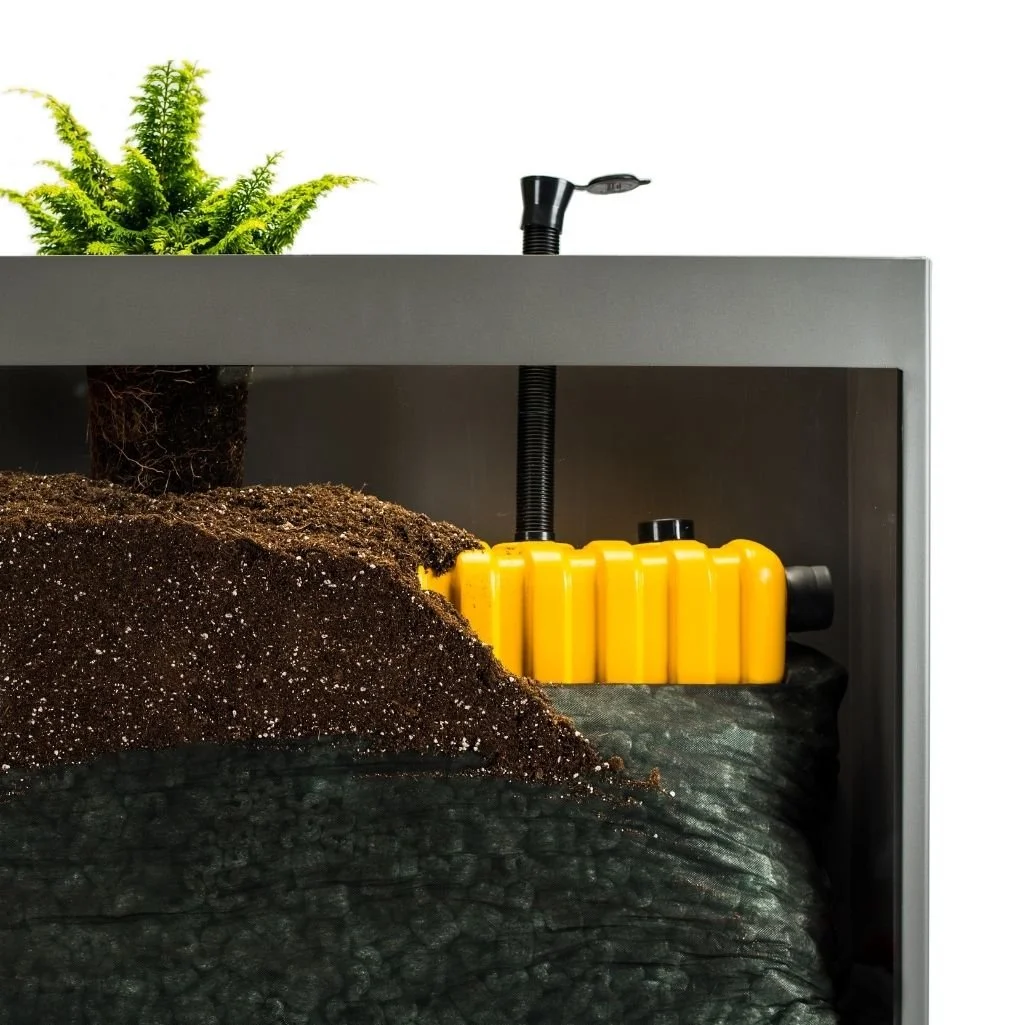How to Fill Void Spaces in Planters
In this article, you’ll learn how to sustainably fill void spaces in your modern planter without wreaking havoc on your budget, wasting soil, or adding additional weight.
We’ll walk through the following 5 ways to fill void spaces in your planters:
Use Plastic Containers
Recycle Wasted Cans
Repurpose Packing Material
Lay Down Rubble
Add an Internal Shelf
When planted properly, greenery in large containers becomes truly stunning and can literally draw patrons into an establishment.
Plus, large containers can be easier to maintain. Because there is more soil volume in a large planter, your plants can develop a more significant root system. And plants with more roots tend to be healthier.
But a gorgeous display in a large planter can quickly become quite a task when you begin trying to fill the substantial amount of empty space in such a planter.
Potting mix is expensive and it’s heavy. Filling a large planter entirely with potting soil is wasteful. After all, the roots of most plants aren’t going to reach all the way to the bottom of the planter. (Keep in mind that shallow-rooted plants generally require 6 inches of soil, while larger plants can require anywhere from 12 to 18 inches.)
Once you know how deep your soil needs to be, you’ll know how much space will be leftover and can choose the most appropriate filler.
1. Use Plastic Containers
The ultimate goal of each of these tips is to fill void space in your planter. One such filler is the plastic containers that you normally toss into the recycling bin.
Clean the containers thoroughly, add them to the bottom of your planter, and then top with landscape fabric. Now you’re ready to add potting mix.
The landscape fabric serves as a barrier, so soil doesn’t leach down around the filler. Plus, the fabric enables water to drain easily.
This approach is best for non-edible plants, as plastic containers sometimes contain harmful dyes or other chemicals.
2. Recycle Wasted Cans
Soda or coffee cans will also do the trick to fill void spaces in your planters.
Line the bottom of your planter with clean cans. Be sure the can openings are pointed downward, so soil doesn’t fall inside the can. Then, apply some pressure to the cans to remove any air pockets.
Top the cans with landscape fabric. Now you’re ready to add potting mix.
3. Repurpose Packing Material
Packing material like foam packing peanuts can serve as a nice bulky filler for void space in your planter.
Packing peanuts allows easy drainage because of the space between individual peanuts. However, when it comes time to replant, packing peanuts can pose a problem since roots can tend to wrap around each individual peanut. You can minimize this issue by placing landscape fabric between the peanuts and the soil. This way, you'll get the drainage benefit and cut down on the mess when you need to replant.
Don’t have any packing material laying around, but feel like this option would work well for your planter? There are many similar solutions you can find online that use recycled materials.
4. Lay Down Rubble
Rubble comes in many forms and can be used to fill void spaces in your planters. You can use rocks, pieces of concrete or bricks, gravel, and/or pebbles.
The benefit of using these types of rubble to fill your planter is that they have some weight to them. Weight can help anchor a tall planter that may be prone to tipping over.
5. Add an Interior Shelf
Depending on the type of planter you have purchased or plan to purchase, internal shelves can be fabricated inside larger planters. If this is a solution that you would like to explore, click here to learn more about custom planters.
Learn More
To achieve the best outcome for your large planter, identifying the right filler and soil depth is critical.
At PureModern, we specialize in creating high-quality custom planters fabricated for longevity with elevated design aesthetics. The suggestions in this article are based on past experience with our clients and what we’ve learned over the years as best practices.
If you’d like more information about large planters, get in touch with us. Our experts are available to answer any questions you may have.



